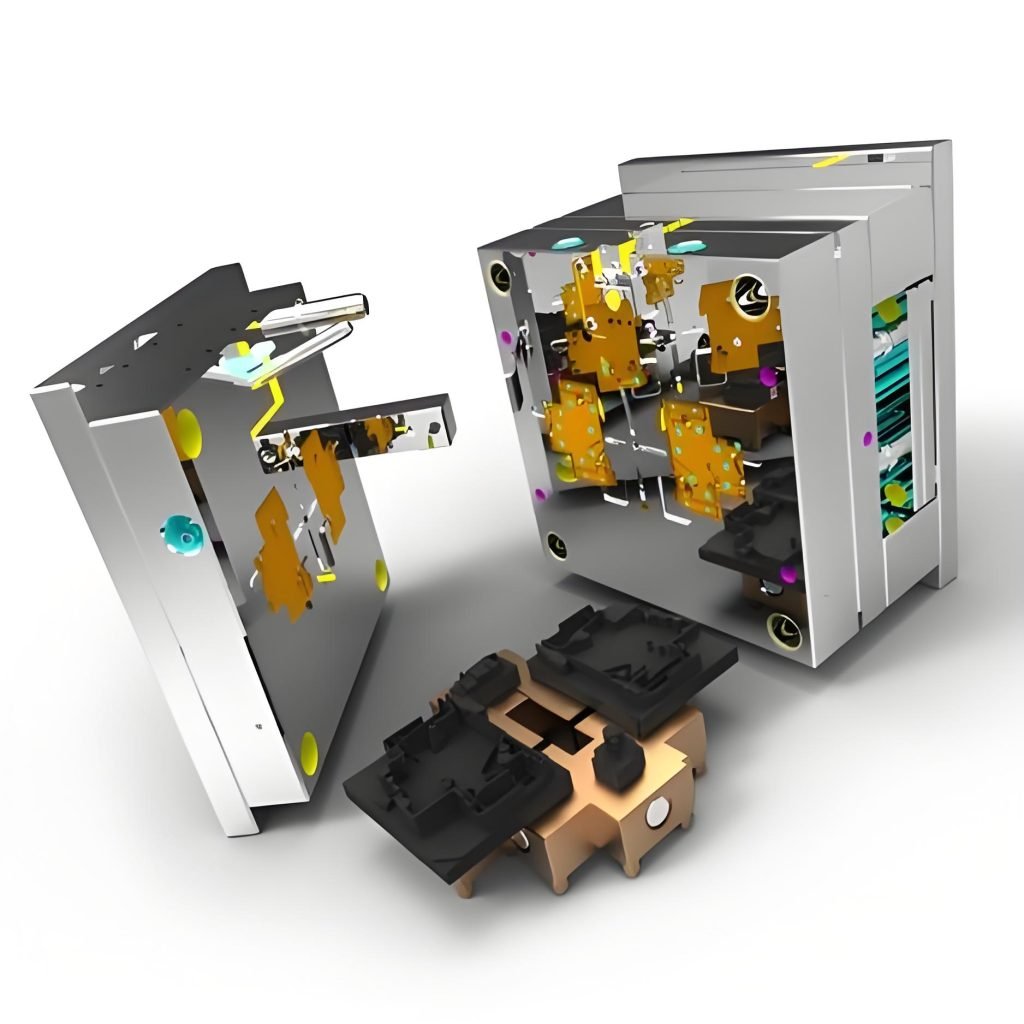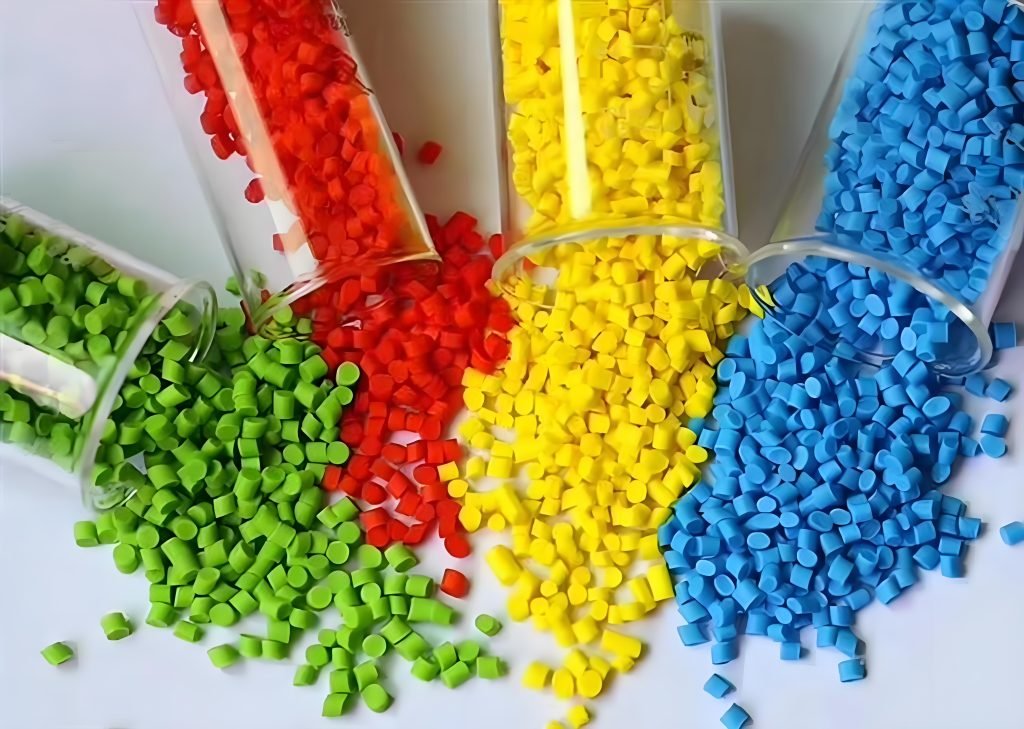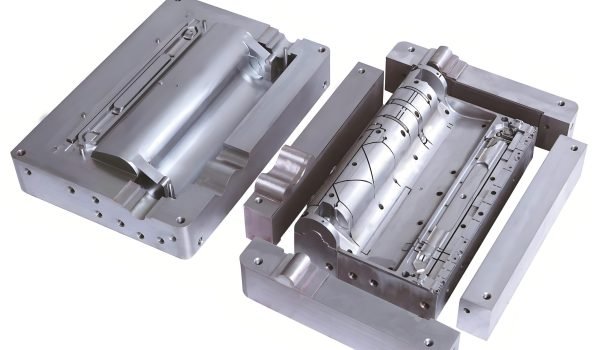Rapid injection molding is a way to make small batches of plastic parts much faster than regular injection molding. It uses mostly the same machines as standard molding. The main time-saving comes from using mold materials like aluminum. These cost less and are easier to shape than the usual materials. These molds are not built to last for huge production runs but they work well for smaller batches of around 500 parts or more.
Here we will explain how rapid injection molding works and why it is useful for faster and smaller production jobs.

What Makes Rapid Injection Molding Different?
Both methods work by injecting melted plastic into a mold. However, rapid injection molding is faster and more flexible. Standard injection molding is best for making large quantities and needs more time to prepare the tools and machines.
On the other hand, rapid plastic injection molding speeds up the process. This is making it perfect for smaller batches and when you need parts quickly.
Key Stages of Rapid Injection Molding Process
Below are the stages of Rapid Injection Molding Process to Know.
- Design and Prototyping
First, a detailed design of the part is made using CAD software. This step is important to decide things like how thick the walls should be, the surface finish, and which material to use. Sometimes, 3D printing is used to make a quick model of the part so it can be checked and tested before making the mold.
- Mold making
The mold is made after the design is ready. Aluminum molds are a popular choice for RIP. This is because they cost less and can be made faster than steel molds. Machines like CNC and EDM help create these molds very precisely.
- Selection of Materials
Choosing the right plastic material is very important. This depends on how the part will be used, how strong it needs to be, and how it should look. Common materials include:
- ABS
- Engineering resins
- Polycarbonate
- Polypropylene
These are all durable and perform well.
- Process of Injection Molding
Then comes the process of heating the chosen plastic material until it melts. This melted plastic is then pushed into a mold using high pressure with a special machine. The process is carefully watched to make sure everything goes smoothly and the part turns out well.
- Cooling and Ejection
Next, the plastic cools and hardens inside the mold. The mold has built-in channels that help cool the part evenly. Once the part is fully cooled, it is pushed out of the mold, completing one cycle of making the part.
- Post-Processing
The part might need some extra work depending on what it will be used for after molding. This could include drilling holes, painting, or putting pieces together. These finishing steps help improve how the part looks, works, or gets ready for its final use.
- Quality Assurance
Manufacturers check every part carefully to make sure it meets the needed size, material, and quality standards. Measurements and tests are there to confirm the part has made correctly and works well.
Rapid injection molding makes it easy to update the design quickly if any changes are needed. This flexibility lets you improve the part based on feedback or test results without much delay.
Compatible Materials for Rapid Injection Molding
One great thing about rapid injection molding is that you have lots of choices when it comes to materials. You can use many kinds of plastics, from common types to special blends. Each plastic has different qualities and needs different ways to be processed. The same plastic type can come in different versions, like ones mixed with glass or carbon fibers for extra strength.
Most regular plastics used for big production runs work just as well with rapid injection molding. This means you can make prototypes or early products using the exact same materials you’d use later for full production.
Common Materials Used in Rapid Injection Molding Are:
- ABS: A popular choice for rapid injection molding prototyping because it is strong, tough, and works well for many uses.
- Polycarbonate (PC): Good for parts that need to resist impact and be clear or see-through.
- Nylon (PA): It is tough and resistant to chemicals. However, it can wear down the mold faster because it is abrasive.
- Polypropylene: PP is light and flexible with great resistance to chemicals.
- TPE/TPU: Rubber-like materials that are soft and flexible, often used for grips, seals, and wearable items.

There are also special materials like glass-filled nylons, PEEK, and acetal. These work well but can wear out softer aluminum molds quicker. PVC is another type that can cause the molds to wear out faster because it is corrosive.
What Makes Rapid Injection Molding Preferable?
Here are the amazing reasons to use Rapid Injection Molding.
- Efficiency in Prototyping
One of the best things about rapid prototyping injection molding is how fast and efficient it is. It lets you quickly create prototypes and move to production faster. This speed helps you get ahead of competitors and test ideas without wasting time or money.
- Cost-Effective Option
Rapid injection molding is affordable, especially for small to medium size production runs. Using aluminum molds helps to lower the initial costs. This makes it easier for companies to stay within budget while still getting high-quality parts.
- Versatility in Design and Material Selection
This process is very flexible and works with different materials. It also handles complex designs well. So, the final parts come out just the way you need.
- Improved Parts Consistency
Getting parts that are accurate and consistent is very important in manufacturing. Rapid injection molding is great at making parts that fit exact measurements and have the same quality every time. This means each part works well and meets the project’s standards.
When to Use Rapid Injection Molding?
Rapid injection molding is great for different scenarios.
If you are on a tight schedule, rapid injection molding is a smart choice. It lets you create working prototypes using real production materials. So, you can test your design without waiting a long time or paying for expensive steel molds.
While rapid injection molds are perfect for small to mid-sized production runs, test programs, or early product launches.
It is also commonly used as bridge tooling. This helps in making parts while you wait for your final steel molds to be ready or if you are unsure about demand. Plus, it is a good option for small batch runs, limited-edition products, or pilot projects.
Experience A Variety of Manufacturing Capabilities with Fecision!
Fecision offers many ways to make your products, including rapid injection molding and other quick production methods. Whether you need prototypes, rapid tooling injection molding, or small production runs, don’t worry. Working with Fecision offers different options to help you turn your ideas into real products faster.




